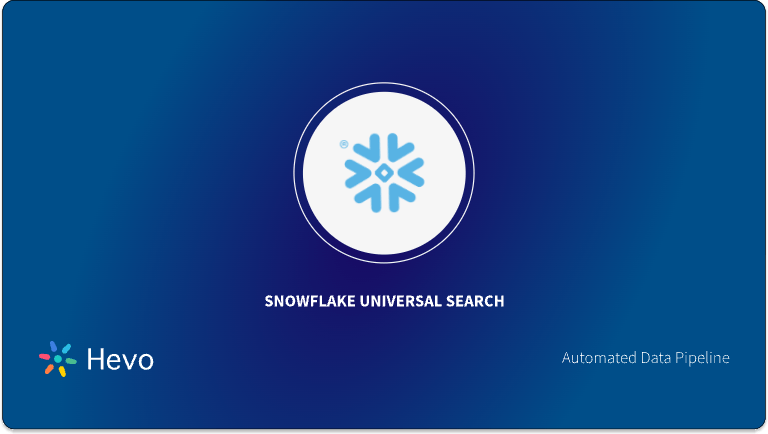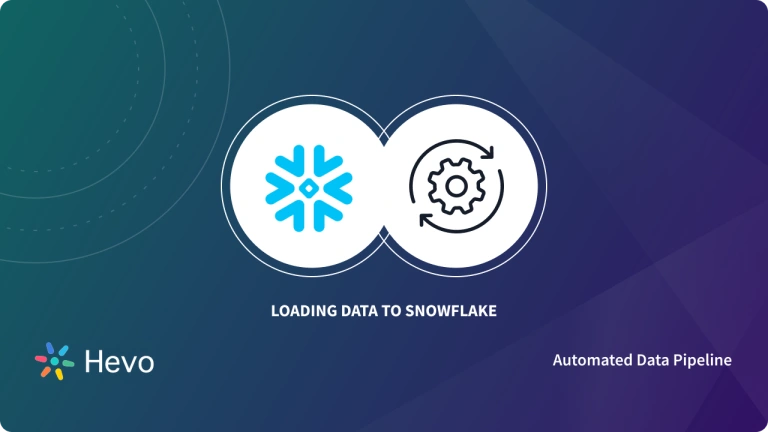There are only two hard things in Computer Science: cache invalidation and naming things.
Phil Karlton
You have finally chosen Snowflake as your centralized data warehousing solution to bring in data from all your data sources. Now comes the “organizing Snowflake” part. You want to select the type of accounts, databases, and schemas. Based on the Snowflake naming conventions, you will also need to select names for your objects describing their contents and use. This is essential as it promotes consistency among users and allows you to easily navigate to the right object in case of an error.
But what are these naming conventions for Snowflake objects? Well, look no further! We have compiled all the best practices you will require in Snowflake. Whether you want to rename objects in your existing Data Warehouse or plan it for the very first time, this 7-minute read has all the Snowflake Naming Conventions best practices you need.
Are you having trouble migrating your data into Snowflake? With our no-code platform and competitive pricing, Hevo makes the process seamless and cost-effective.
- Easy Integration: Connect and migrate data into Snowflake without any coding.
- Auto-Schema Mapping: Automatically map schemas to ensure smooth data transfer.
- In-Built Transformations: Transform your data on the fly with Hevo’s powerful transformation capabilities.
- 150+ Data Sources: Access data from over 150 sources, including 60+ free sources.
You can see it for yourselves by looking at our 2000+ happy customers, such as Airmeet, Cure.Fit, and Pelago.
Get Started with Hevo for FreeTable of Contents
Snowflake Naming Conventions for Account-Level Objects

Account Level Objects are the non-database objects, i.e., users, roles, warehouses, databases, etc. Commonly, you might be working with different environments in a single account. Hence, as a good practice in Snowflake Naming Conventions, you can add the environment prefixes, such as SIT(System Integration Testing), UAT(User Acceptance Testing), QA(Quality Assurance), etc., to the object name as a differentiator. For instance, you can add DEV, PRD, and TEST for development, production, and testing environments. It is suggested to include prefixes for your database names.

Now that you have a general idea of adding prefixes to the object names based on different environments, let’s go deeper into the Snowflake Naming Conventions of the individual objects:
User Level
Different from the login name, a user name is a unique identifier for a user. There are 2 types of accounts, namely the user account used by real and the service account required by system services.
| Account Type | Naming Convention | Description | Example | Permissions |
| User | [Email] | Email addresses within an organization | user@company.com | USERADMIN |
| Service | [ENV]_[PROJECT/PROGRAM]_[APP_CODE]_USER | Environment_ project/program short code_ application name or short code_USER postfix | TEST_HEVODATA_APP_USER | USERADMIN |
Role Level

Roles are privileges granted to users on securable objects that allows them to execute certain actions needed for business functions in your organization. For USER Roles, environment prefixes are generally not used. This is because you can control access to multiple environments using grants. However, in cases of Service Roles, you would need prefixes so that access is not shared between environments.
| Account Level Object | Naming Convention | Description | Example | Permissions |
| Role | [PROJECT/PROGRAM]_[ROLE_NAME]_ROLE | Project Name_Role of user in the project_ROLE postfix | HEVODATA_ANALYST_ROLE HEVODATA_DEVELOPER_ROLE | USER ADMIN |
Take the guesswork out of your Snowflake costs—explore our interactive Snowflake Pricing Calculator for precise insights!
Warehouse Level
When creating a virtual warehouse with the desired resources such as CPU, memory, and temporary storage for performing several operations, you can go along with the following Snowflake Naming Conventions:
| Account Level Object | Naming Convention | Description | Example | Permissions |
| Virtual Warehouse | [ENV]_[PROJECT/PROGRAM]_[ROLE_NAME]_[WH_SIZE] | Environment_Project Name_User Role_Warehouse Size | DEV_HEVODATA_DBT_WH_XL | SYSADMIN |
Database Level
You can have multiple schemas in a Database in your Snowflake Account. You can follow the given Snowflake naming conventions for your database:
| Account Level Object | Naming Convention | Description | Example | Permissions |
| Database | [ENV]_[PROJECT/PROGRAM]_[DATA_LAYER]_DB | Environment_Project name_Data Layer Name_DB postfix | DEV_HEVODATA_STAGING_DB | SYSADMIN |
Snowflake Naming Conventions for Schema-Level Objects
When you name schema-level objects, you can leave out the environment prefix as commonly, there aren’t multiple environments inside a single database. Though, it is good practice to add a prefix that describes the schema’s purpose:
- LND: To indicate a landing schema used to hold newly ingested data.
- RAW: To indicate a raw staging area.
- INT: To indicate an integration area where raw data is combined and cleaned before analysis.
- MRT: To indicate a data mart holding conformed and cleaned data ready for reporting.
- WRK: To indicate workbench schemas, which provide a sandbox for data analysts.
As a standard, you can go with the following Snowflake Naming Conventions for schemas:
| Naming Convention | [DATA_GROUPING] |
| Description | Groupings by source name |
| Example | DEV_HEVODATA_RAW.HUBSPOT |
| Permissions | CREATE SCHEMA |
To know in detail about each schema-level object, you can go through the table given below:
| Object Type | Naming Convention | Example |
| Table | [TABLE_NAME] | DEVICE |
| View | [VIEW_NAME] | DATE |
| Integration | [NAME]_[TYPE]_[SUB_TYPE]_INT | SALESFORCE_API_AWS_INTG |
| File Format | [NAME]_[FORMAT]_FF | SALESFORCE_XML_FF |
| Stage | [NAME]_[TYPE]_STG | SALESFORCE_S3_STG |
| Snowpipe | [NAME]_PIPE | SALESFORCE_PIPE |
| Stored Procedure | [NAME]_SP | SALESFORCE_SP |
| Stream | [NAME]_STREAM | SALESFORCE_STREAM |
| Task | [NAME]_TASK | SALESFORCE_TASK |
Snowflake Naming Conventions Constraints
While naming your objects such as tables, views & columns, you do have to check that the naming is done according to Snowflake’s constraints, such as:
- A name can contain up to 128 characters.
- The first character in a name can be a letter, @, _, or #.
- A name must begin with a letter (A through Z), diacritic marks, non-Latin characters (200–377 octal), or an underscore (_).
- To enable case sensitivity, enclose names in quotation marks. All references to quoted names must always be enclosed in quotation marks.
- A name cannot be a reserved word in Snowflake such as WHERE or VIEW.
- A name cannot be the same as another Snowflake object of the same type.
Bringing It All Together
Awesome, you finally named all your Snowflake Objects. The intuitive Snowflake Naming Conventions are easy to adapt and allow you to quickly learn about the object just by its name. But one challenge is still haunting everyone on the engineering team. You have the data store, but you still need to bring in data from multiple sources. When the new data connector requests start coming in, you will have to invest at least 40-60% of bandwidth to create and maintain custom data pipelines.
Apart from doing your primary engineering goals, you need to be on the lookout for any data leakage and fix it on priority. This eventually becomes a resource and time expensive task.
No worries! There are already cloud-based solutions for this also that completely automate the data integration without requiring you to write any code. For instance, you can hop onto a smooth ride with a No-Code ETL tool like Hevo Data and enjoy 150+ plug n play integrations.
No need to go to your Snowflake data warehouse for post-load transformations. You can simply run complex SQL transformations from the comfort of Hevo’s interface and get your data in the final analysis-ready form.
Frequently Asked Questions
1. What is the naming convention for Snowflake tables?
a) Use names that clearly describe the content or purpose of the table.
b) Maintain a consistent naming convention across your database. This might include using all lowercase or uppercase, separating words with underscores, and following a standard format.
c) Do not use SQL reserved keywords as table names.
2. What is the naming convention for Snowflake service account?
a) Reflect the specific purpose or function of the service account in its name.
b) Standardize the names with prefixes or suffixes that indicate they are service accounts.
c) Use only alphanumeric characters and underscores to ensure compatibility and avoid issues.
3. What are the restrictions for Snowflake column names?
a) Column names must be between 1 and 255 characters in length.
b) Column names can include letters, numbers, and underscores. Special characters, spaces, and starting with a number are generally not recommended.
c) Column names are case-insensitive by default, but Snowflake stores them in uppercase. If you want to preserve the case sensitivity, you need to use double quotes.











